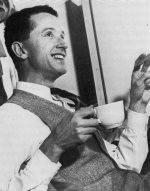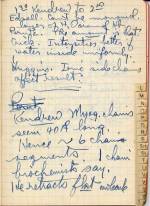|
Pauling was confident that he could solve DNA. He had already started thinking about
it. The only problem would be if someone beat him to it, but he could not take the
possibility very seriously. Wilkins and Franklin were at work on it - Corey, in fact,
had visited Franklin's laboratory while over for the Royal Society meeting in May
and had seen her excellent DNA x-ray photos - but there was no indication that either
of them knew enough chemistry to be a serious threat.
If Bragg were involved, that would be a different matter. But the only indication
that anyone at the Cavendish was looking at DNA came from one of Pauling's Caltech
colleagues, Max Delbrück, who was in correspondence with a young postdoctoral fellow of Kendrew's, twenty-two-year-old
Jim Watson. Watson had written Delbrück something about looking for a DNA model. Delbrück
shared Watson's letter with Pauling.
It did not sound very serious. Although Delbrück thought Watson was promising, he
had not been good enough to get admitted to Caltech when he applied for graduate work.
The gentlemen at the Cavendish had, in any case, not yet beaten Pauling in any race.
|
|
Click images to enlarge

Max Delbrück. 1949.

Pauling Diary: "Trips to Germany, Sweden, and Denmark, July and August 1953" July - November 1953.
"Max is rather silent, but to spend the days chewing on a problem, and writing and
erasing things on the blackboard with him, is terribly exciting. He is unusually cultured
by American standards. You know, most American scientists are duds; they never have
read a sensible book."
|

